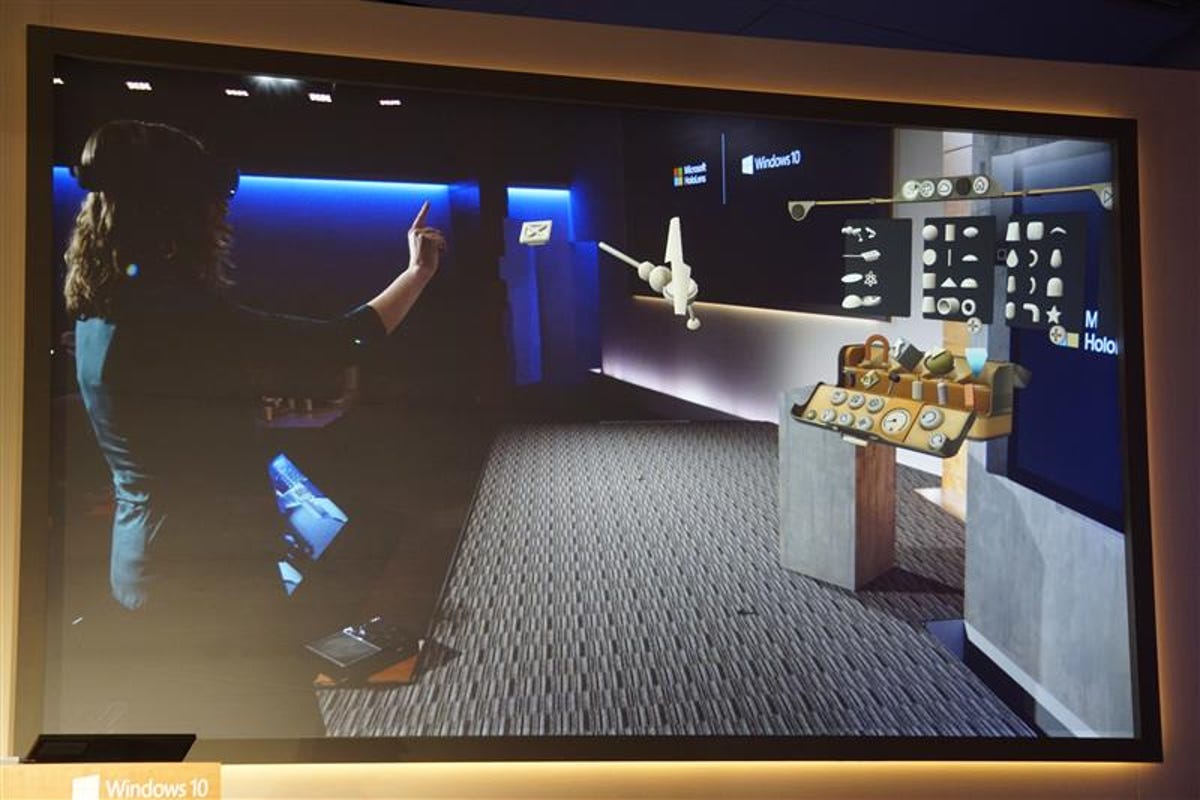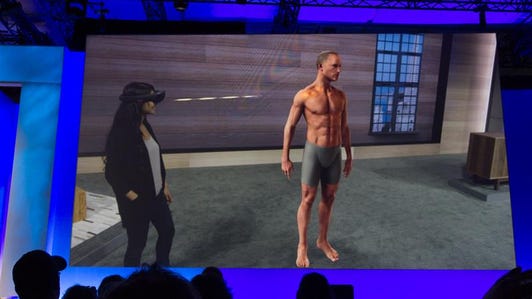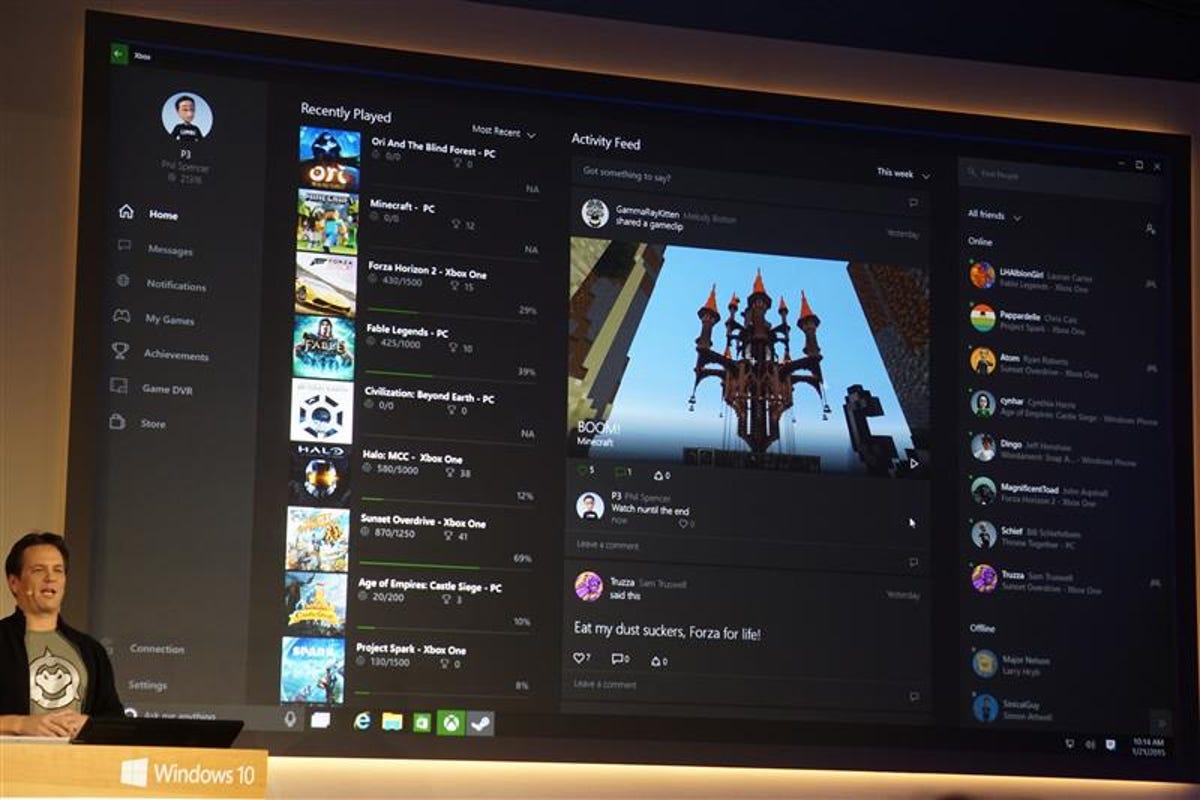
Screenshot by Sarah Tew/CNET
This isn’t the first time we’ve seen Windows 10; operating-system releases don’t power out like race cars, they ooze out like honey, sometimes taking a year between the first previews and the first shipment. That’s good. It takes time for developers to ramp up support and for users to ease into the notion of a platform change. We first officially saw Windows 10 in late September, which was followed in October by the release of the Technical Preview .
With its latest press event, Microsoft makes its consumer pitch, the second of “several conversations” it plans. Here’s everything you might have missed, especially if you were watching Microsoft’s glitchy live stream.
You can also check out our video highlights.
Live from Microsoft’s Windows 10 event (pictures)






+39 more
Ship date, price and packaging, and strategy
Microsoft is now viewing Windows as a service, one that it wants “people to love on a daily basis,” and frames its goal as not building apps but creating “harmonizing experiences.” Touting its new open development strategy, the company’s representatives spent some time thanking the 1.7 million members of its Windows Insiders program for their feedback.
We were expecting — nay, hoping! — good news about price. And Windows 10 will be free, for some. During the first year after Windows 10 ships, Windows 8.1 and Windows 7 users get a free upgrade, as will Windows Phone 8.1 users. Microsoft also claims that it won’t cut off Windows 10 support — support will last for the life of the device.
The next build will be available to Insiders next week, with the Windows Phone build coming after the Super Bowl (that’s February 1 for you non-football fans).


Now playing:
Watch this:
Microsoft gives us holograms with Windows 10
3:00
New visions: Windows Holographic, Surface Hub Pro
And now for something completely different: Microsoft showed off its not-so-blue-sky interaction technology, Windows Holographic , a wireless headset called HoloLens with a see-through, augmented-reality-type display that will be available this year. Microsoft is partnering with NASA’s Jet Propulsion Laboratory to bring the HoloLens to scientific research.
In order to build the headset, Microsoft created a holographic processing unit to provide the performance necessary to understand where you’re looking, what you’re saying and what gestures you’re making, spatially map your environment and so on.
Check out what the Microsoft HoloLens can do (pictures)






+17 more
The Windows 10 application programming interface has holographic support baked right in, and the holographic apps are Windows universal apps; existing VR goggles like Oculus will be able to work with it.
A new application, HoloStudio, will let you create your own holograms. It pops up holographic tools and objects that you use with gestures and voice commands to combine and edit, and send to a 3D printer. (While it’s a cool demo, like many large-gesture-based interfaces it seems somewhat awkward and unnatural to use precisely.)
And for the more business-focused, there’s the new Microsoft Surface Hub Pro, an 84-inch 4K display with built-in sensors, cameras, speakers, mics, NFC and Wi-Fi. It can double as a digital whiteboard running OneNote, and, of course, runs Windows, so you can get screen captures and annotate and share them, and it natively runs Skype for Business.
Shared gaming: Xbox app
Microsoft emphasized the social aspects of gaming, specifically the Xbox app for Windows 10 that is included with the operating system. It includes friends based on gamer tags, a My Games center, messages and an activity feed. You’ll be able to share clips as well, and via a hotkey combination you can save the last few seconds of gameplay.
The new acceleration and rendering engine, DirectX 12, supposedly runs faster on older hardware than DirectX 11, and gives developers more discrete control over CPU and GPU operations. Microsoft also claims power consumption requirements of games written to DirectX 12 will be halved. The Unity engine supports it now.


Nate Ralph/CNET
Coming later in 2015, you’ll be able to link another device to your Xbox One and stream console games to Windows 10 PCs and tablets. Lionhead Studios showed Fable Legends in cross-device play mode.
The shared operating system also means that application developers can bring their software to the Xbox One — if they want. We’ll hear more about Xbox One at the Game Developer’s Conference later this year, natch.
Shared interface and applications: Office, Continuum, Cortana and Project Spartan
The philosophy behind the Windows 10 platform: from phone to tablet to hybrid to desktop to console to the Internet of Things, its capabilities and software run a “continuum,” and Microsoft plans to make it seamless to switch among them. Unlike Apple’s Handoff, which lets you quickly access content in progress among devices, Microsoft envisions a single operating system that behaves in an optimized fashion on each device, and which knows, for example, when your hybrid device morphs from tablet to laptop.
Microsoft showed it simply pops up a dialog when you remove the keyboard from a Surface and the interface switches from touch/tile to Windows, and displayed an 8-inch tablet running a full version of Windows.
We’ve already seen the retreat from Windows 8 on a couple of fronts — the return of the Start menu, and windowed applications (rather than full-screen), for example — plus some new features like virtual desktops. The philosophy is “Interacting with technology should be as natural as interacting with people” and “More personal computing” is the new official tagline. To wit: ink, voice, gestures and gaze interaction.
In the newest release, the Start Menu can now go full-screen. The Charms bar becomes the Action Center, and the Control panel and the Settings menu merge.
Cortana is now becoming a full digital assistant. It understands seven languages and several accents, and will run on the desktop. Microsoft exec Joe Belfiore demonstrated natural-language interactions and Cortana issuing reminders; you can manually enter notes about yourself, rather than waiting for her to learn about you.
The company will supply a family of universal Windows apps — applications that run on multiple device platforms, such as Microsoft Office — which seems to mean better touch support. Most of the apps use the Office engines (so, for example, the full Word and Outlook engines); they’re just rendered for the specific screen. Photos operates the same as on the desktop, which brings auto enhance to that.
Coming in a couple months, you’ll be able to store and sync music via OneDrive.
Microsoft showed off Windows 10 running on a Lumia 1520 . It still uses tiles, but in terms of behavior and settings a lot of it works the same as on the desktop. Belfiore also showed voice dictation. The company is also building a more integrated messaging experience, such as SMS, calling and Skype.
Microsoft finally thinks it’s time to “build a new browser for the modern Web.” Project Spartan , which won’t be in the next build, has a real-time annotation feature, a reading list and a reading mode that displays content in a consistent format and syncs across devices.
Spartan also integrates Cortana, guessing from what you’re searching for to find quicker ways to answer — like flight-tracking information, directions, menus, hours of operations and so on.
But wait — there’s even more! Check out our full coverage of Microsoft’s January 2015 Windows event. And check out our full coverage of today’s Windows 10 news.




